I’m sure you heard this word a lot before…
Our body needs calories to give us energy, but eating too many of them won’t do us any favours.
1st step: Take a look of how many calories you need per day.
2nd step: Find out how many calories are in your food
3rd step: Learn about Carbohydrates, Protein and Fat, so you will know how to eat the correct portions of each one.
CARBOHYDRATES
CARBOHYDRATES are a source of energy for the body.
Starchy vegetables are better earlier during the day, specially if you are exercising to give you energy.
Starchy vegetables are healthy, but they are higher in carbohydrate than other vegetables and they have more calories.
Non Starchy carbs are best for dinner. If you are not working out today only have these ones through the day. For optimal fat loss, the final 1-2 meals of the day should contain only lean protein and non-starchy vegetables.
If you want to lose weight , you need to know the difference between the good and bad carbs.
Starchy vegetables are better earlier during the day, specially if you are exercising to give you energy.
Starchy vegetables are healthy, but they are higher in carbohydrate than other vegetables and they have more calories.
Non Starchy carbs are best for dinner. If you are not working out today only have these ones through the day. For optimal fat loss, the final 1-2 meals of the day should contain only lean protein and non-starchy vegetables.
If you want to lose weight , you need to know the difference between the good and bad carbs.
EXAMPLES: Avoid bad Carbs like: sugar,
pastries, desserts, sweets, chocolate, chips, processed breakfast
cereals, sweetened soft drinks and white bread (replace it for brown
bread instead).
Limit/Reduce (and try to avoid if you want to lose weight quickly, especially at dinner): pasta, white potatoes, white rice.
Choose good Carbs like: vegetables, fruits.
Top 10 Energy Foods: Carbs Athletes Should Love
Not since the public outcry against fat has there been such uproar about popular nutrition--the message in the mainstream media seems clear: It's protein you want not carbs! With all the hype, no wonder so many of us are second-guessing our eating habits. In truth, the message about carbohydrates has been so over-simplified that many people are skimping on the most critical energy source the body has.
Restricting carbohydrates can zap energy levels, compromising the quality of workouts and negating the benefits of a fitness program.
Here's the simple truth: There are many high-carbohydrate foods beneficial to both your health and athletic performance. The key is choosing the right carbs.
Following is a breakdown of ten of the best energy-sustaining foods, all loaded with powerful nutrients to keep your body running on premium fuel.
1. Rolled Oats
Heart disease still tops the charts as the No. 1 cause of death among women, so it's no surprise that the Food and Drug Administration recommends women on a 2,000-calorie daily diet eat about 30 grams of fiber a day.
With a mere half cup of cooked oats providing four grams of dietary fiber, adding rolled oats to your diet will help you meet this recommendation.
Fiber not only helps reduce risk for heart disease, it slows glucose absorption into the bloodstream, helping maintain peak energy levels and curb appetite. Rolled oats are also an excellent source of B vitamins (great for stress management and energy production) and contain a significant amount of zinc for immune function.
2. Lentil Soup
Lentils produce a low-glycemic response, meaning you won't experience a spike in blood sugar followed by an energy-sapping crash. Also loaded with dietary fiber (eight grams per half-cup serving), lentils provide the feeling of satiety, helping mute those intense cravings for sweets. Lentils also are packed full of folic acid, a nutrient essential for keeping cardiovascular risk low and guarding against birth defects.
3. Fresh Figs
Just three figs provide a whopping 30 grams of good carbohydrates along with a multitude of B vitamins, calcium and potassium to help ensure peak muscle function and optimal bone health. Figs also are an excellent source of soluble pectin fiber, shown to lower cholesterol and ultimately reduce cardiovascular risk. For a tasty snack, try serving quartered fresh figs with a dollop of reduced-fat ricotta cheese or flavored yogurt.
4. Roasted Chestnuts
In comparison to other calorie- and fat-dense nuts, chestnuts contain less than one gram of fat per ounce while providing a hefty dose of fiber, vitamin C and folic acid, nutrients important for immune function, formation of collagen and reduced risk for cardiovascular disease. Chestnuts are tasty in stuffing, pilaf, vegetable side dishes and soups. Or try them as a snack by themselves.
5. Blueberries
A one-cup serving and a mere 80 calories later, you get 20 grams of energy-enhancing carbohydrates, four grams of appetite-curbing fiber as well as a significant amount of vitamin C, a potent antioxidant that keeps the immune system revved. Blueberries have the highest ORAC (oxygen radical absorbance capacity) score of any fresh fruit, which means they can destroy free radicals in the body before they cause damage to healthy cells.
In addition, the dye that makes blueberries "blue" has been shown to improve memory, balance and coordination. Blueberries are a tasty addition to cereals, salads and smoothies. In the colder months when fresh blueberries are less prevalent, opt for the frozen variety.
6. Low-fat Plain Yogurt
Yogurt has always been touted as a nutritional powerhouse, partly because it's loaded with calcium, a critical nutrient considering osteoporosis affects 20 million women each year. Rich in vitamin B-12, yogurt also helps prevent fatigue. And plain yogurt just may be the perfect recovery food for athletes, as it promotes glycogen replenishment and muscle recovery.
Give yourself an energy boost after your next workout by slicing a ripe banana into a cup of plain yogurt. Make sure your yogurt contains active cultures called probiotics, hugely beneficial to immune function.
7. Rice Bran
The USDA reports more people are eating refined white bread, which lacks quality nutrients due to processed flours. Rice bran boasts superior nutritional credentials, with five grams of carbohydrates and more than two grams of fiber in a mere two tablespoons.
Furthermore, it provides 23 percent of the RDA for magnesium, a nutrient directly responsible (along with calcium) for the production of adenosine triphosphate (ATP), for energy during metabolism, as well as conversion of glycogen to glucose for use as the body's fuel during exercise.
Rice bran can replace up to half the flour in any quick bread or muffin recipe and be added to recipes for meatloaf and casseroles. If you don't plan on baking in the near future, try sprinkling rice bran on cereal, salad or yogurt.
8. Whole Wheat Pasta
Despite some concerns about the glycemic response of large portions of pasta, this common carbo-loading meal can be a healthful addition to your diet. Whole wheat pasta provides nearly 40 grams of energy-rich carbohydrates per one cup (cooked) serving. In addition, whole wheat pasta provides five grams of dietary fiber, most of it insoluble fiber, shown to reduce risk for breast cancer.
To ensure you are buying the healthiest whole wheat pasta, look for at least four grams of dietary fiber and five grams of protein per two ounces dry (or one cup cooked) serving. Be sure to watch portions and try to add a protein (chicken, ground sirloin) to your plate to avoid craving that second pasta portion. And, of course, add some veggies for color, fiber and an array of health-enhancing nutrients.
9. Sweet Potatoes
Despite this vegetable's impressive nutritional profile and appealingly "sweet" flavor, consumption of sweet potatoes is on the decline. A look at the facts might change your mind about this nutrient-dense veggie: A four-ounce sweet potato contains a mere 143 calories with a whopping 28 grams of carbohydrates and more than 100 percent of your daily requirement for beta-carotene.
A sweet potato also packs in more than a quarter of your daily needs for vitamins C and E, nutrients shown to prevent cell damage in athletes competing in extreme environments (altitude, heat, cold, pollution), as well as enhance muscle recovery after intense training. Sweet potatoes are also an excellent source of iron. Expand your intake of sweet potatoes beyond Thanksgiving by stirring them into chili, adding some to your favorite potato salad recipe, and adding shredded raw sweet potato into hamburger, meatloaf and meatball mixtures. Also, try using mashed sweet potato as a ravioli stuffing.
10. Oranges
Considered by many to be winter's most delicious fruit, oranges are rich in natural sugars for a quick energy boost, yet provide three grams of fiber for sustained energy. In addition, just one navel orange meets an entire day's requirement for vitamin C, while providing immune-enhancing flavonoids, helping to keep colds and flus at bay.
Your heart will also benefit from the folate in oranges. Opt for the whole orange (rather than juice), and be sure to eat the spongy inner layer that lies right under the colorful part of the skin to ensure you are receiving energy-sustaining fiber. Besides using oranges as a tasty, convenient snack, try adding sections of oranges to salads or smoothies, or using the juice as a marinade for meat.
Understanding Glycemic Index
The rate at which carbohydrates raise blood sugar and consequent insulin is measured by glycemic index. Carbohydrate-rich foods with a high-glycemic value enter the bloodstream rapidly, leading to a quick rise in blood glucose and the release of insulin.
A survey conducted at Harvard University's School of Public Health determined that 16 of the top 20 carbohydrates eaten by Americans are high glycemic. In fact, high-glycemic snack foods comprise 25 percent of the total caloric intake in the United States. Among the most popular are french fries, white bread, cereals with added sugar, soda, pizza and muffins.
In contrast, low-glycemic foods, which tend to be higher in fiber or contain protein, are converted into glucose slower than high-glycemic foods and, therefore, less insulin is needed to regulate blood sugar. About 50 to 70 percent of an athlete's total daily calorie intake should be from low-glycemic carbohydrates (three to five grams per pound of lean body weight). And no more than 10 percent of the calories eaten at rest should be from high-glycemic foods.
Good Choices: Enjoy sweet potatoes, old fashioned oatmeal, energy bars (Clif, PowerBar), beans, low-fat dairy foods, most fruits, 100 percent whole wheat or whole grain bread, oatmeal, nuts, whole wheat pasta, green peas, hummus and rice bran.
Foods to Avoid: Steer clear of sugared soft drinks, processed grains (white bread), french fries, pastries, scones, sugared cereals, syrup, whipped cream, chips and movie popcorn.

Top Foods High in Protein
Note:
"Specially great for a pre-meal workout if you are doing strength training.
I have my dinner before going to the gym quiet early because
I know that around 2 or 3 hours later I'll have my strength training.
After my workout I have a protein shake straight away and then is bed time for me.
I'm trying to sleep 8 hours to burn more fat, which is amazing.
Protein will help you to repair the tissues of your muscles as well.
Don't forget to stretch after your workout and wait 24 to 48 hours to give your body a rest from the strength training.
You can do cardio (aerobics,zumba,swimming,etc.) instead or have one of your rest days.
Your body is a great machine you just need to know how to fuel it properly so you can look and feel great"
#1: Turkey Breast (and Chicken Breast)
Chicken: Chicken Breast (58g) provides 17g protein. Chicken Leg (69g) provides 18g protein. Chicken Thigh (37g) provides 9g protein. Click to see complete nutrition facts.
 #2: Fish (Tuna, Salmon, Halibut)
#2: Fish (Tuna, Salmon, Halibut)
Other fish high in protein per fillet(3oz or 85g): Tuna (22g), Salmon (22g), Halibut (22g), Snapper (22g), Perch(21g), Flounder and Sole (21g), Cod (20g), Tilapia (17g). Click to see complete nutrition facts.
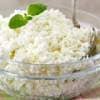 #3: Cheese (Low-fat Mozzarella and Cottage Cheese)
#3: Cheese (Low-fat Mozzarella and Cottage Cheese)
Other cheese high in protein per ounce(28g): Low-fat Cottage Cheese (5g), Low-fat Swiss Cheese (8g), Low-fat Cheddar (6g), Parmesan (10g), Romano (9g). *Low fat Mozzarella and Cottage cheese provide the most protein per calorie. Click to see complete nutrition facts.
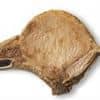 #4: Pork Loin (Chops)
#4: Pork Loin (Chops)
Sirloin Roast 3oz (28g) provides 23g of protein, Ham 3oz (28g) provides 18g of protein, 1 slice of bacon (8g) provides 3g of protein. Click to see complete nutrition facts.
 #5: Lean Beef and Veal (Low Fat)
#5: Lean Beef and Veal (Low Fat)
T-Bone Steak 3oz (28g) provides 19g of protein, 1 Piece of Beef Jerky (20g) provides 7g of protein. Click to see complete nutrition facts.
 #6: Tofu
#6: Tofu
Click to see complete nutrition facts.
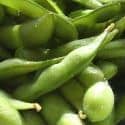 #7: Beans (Mature Soy Beans)
#7: Beans (Mature Soy Beans)
Other beans high in protein per cup cooked: Kidney Beans (17g), White Beans (17g), Lima Beans (15g), Fava Beans (14g), Black Beans (15g), Mung Beans (14g). Click to see complete nutrition facts.
 #8: Eggs (Especially Egg Whites)
#8: Eggs (Especially Egg Whites)
1 Egg White (33g) provides 4g protein, 1g protein to 4.4 calories.
Click to see complete nutrition facts.
 #9: Yogurt, Milk, and Soymilk
#9: Yogurt, Milk, and Soymilk
1 cup skim milk (245g) provides 8g protein, 1 cup soymilk (243g) provides 8g protein. Click to see complete nutrition facts.
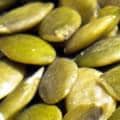 #10: Nuts and Seeds (Pumpkin, Squash, and Watermelon Seeds, Peanuts, Almonds)
#10: Nuts and Seeds (Pumpkin, Squash, and Watermelon Seeds, Peanuts, Almonds)
Other nuts and seeds high in protein (grams proten per ounce (28g)): Peanuts (7g), Almonds (6g), Pistachios (6g), Sunflower Seeds (6g), Flaxseed (5g), Mixed Nuts
Avoid this = Substitute with this instead
Whole milk = Skimmed milk / Almond milk / Soya milk
Mayonnaise = Reduced fat or fat-free mayonnaise
Cream cheese = Light or fat-free cream cheese
Regular cheese = Part skim or reduced fat cheese
Whole egg = Two egg whites
Whipped cream = Non-fat yogurt, or whipped topping made with skim milk
Ghee or butter = Low fat butter
Ice cream = Frozen dessert made with vegetable oil
Myfitnesspal . It can help you a lot to understand about the % of calories in food,
like : carbs, protein and fat. You can even scan your items at the super
market to understand a food label in a much simpler way. Give it a try!
Restricting carbohydrates can zap energy levels, compromising the quality of workouts and negating the benefits of a fitness program.
Here's the simple truth: There are many high-carbohydrate foods beneficial to both your health and athletic performance. The key is choosing the right carbs.
Following is a breakdown of ten of the best energy-sustaining foods, all loaded with powerful nutrients to keep your body running on premium fuel.
1. Rolled Oats
Heart disease still tops the charts as the No. 1 cause of death among women, so it's no surprise that the Food and Drug Administration recommends women on a 2,000-calorie daily diet eat about 30 grams of fiber a day.
With a mere half cup of cooked oats providing four grams of dietary fiber, adding rolled oats to your diet will help you meet this recommendation.
Fiber not only helps reduce risk for heart disease, it slows glucose absorption into the bloodstream, helping maintain peak energy levels and curb appetite. Rolled oats are also an excellent source of B vitamins (great for stress management and energy production) and contain a significant amount of zinc for immune function.
2. Lentil Soup
Lentils produce a low-glycemic response, meaning you won't experience a spike in blood sugar followed by an energy-sapping crash. Also loaded with dietary fiber (eight grams per half-cup serving), lentils provide the feeling of satiety, helping mute those intense cravings for sweets. Lentils also are packed full of folic acid, a nutrient essential for keeping cardiovascular risk low and guarding against birth defects.
3. Fresh Figs
Just three figs provide a whopping 30 grams of good carbohydrates along with a multitude of B vitamins, calcium and potassium to help ensure peak muscle function and optimal bone health. Figs also are an excellent source of soluble pectin fiber, shown to lower cholesterol and ultimately reduce cardiovascular risk. For a tasty snack, try serving quartered fresh figs with a dollop of reduced-fat ricotta cheese or flavored yogurt.
4. Roasted Chestnuts
In comparison to other calorie- and fat-dense nuts, chestnuts contain less than one gram of fat per ounce while providing a hefty dose of fiber, vitamin C and folic acid, nutrients important for immune function, formation of collagen and reduced risk for cardiovascular disease. Chestnuts are tasty in stuffing, pilaf, vegetable side dishes and soups. Or try them as a snack by themselves.
5. Blueberries
A one-cup serving and a mere 80 calories later, you get 20 grams of energy-enhancing carbohydrates, four grams of appetite-curbing fiber as well as a significant amount of vitamin C, a potent antioxidant that keeps the immune system revved. Blueberries have the highest ORAC (oxygen radical absorbance capacity) score of any fresh fruit, which means they can destroy free radicals in the body before they cause damage to healthy cells.
In addition, the dye that makes blueberries "blue" has been shown to improve memory, balance and coordination. Blueberries are a tasty addition to cereals, salads and smoothies. In the colder months when fresh blueberries are less prevalent, opt for the frozen variety.
6. Low-fat Plain Yogurt
Yogurt has always been touted as a nutritional powerhouse, partly because it's loaded with calcium, a critical nutrient considering osteoporosis affects 20 million women each year. Rich in vitamin B-12, yogurt also helps prevent fatigue. And plain yogurt just may be the perfect recovery food for athletes, as it promotes glycogen replenishment and muscle recovery.
Give yourself an energy boost after your next workout by slicing a ripe banana into a cup of plain yogurt. Make sure your yogurt contains active cultures called probiotics, hugely beneficial to immune function.
7. Rice Bran
The USDA reports more people are eating refined white bread, which lacks quality nutrients due to processed flours. Rice bran boasts superior nutritional credentials, with five grams of carbohydrates and more than two grams of fiber in a mere two tablespoons.
Furthermore, it provides 23 percent of the RDA for magnesium, a nutrient directly responsible (along with calcium) for the production of adenosine triphosphate (ATP), for energy during metabolism, as well as conversion of glycogen to glucose for use as the body's fuel during exercise.
Rice bran can replace up to half the flour in any quick bread or muffin recipe and be added to recipes for meatloaf and casseroles. If you don't plan on baking in the near future, try sprinkling rice bran on cereal, salad or yogurt.
8. Whole Wheat Pasta
Despite some concerns about the glycemic response of large portions of pasta, this common carbo-loading meal can be a healthful addition to your diet. Whole wheat pasta provides nearly 40 grams of energy-rich carbohydrates per one cup (cooked) serving. In addition, whole wheat pasta provides five grams of dietary fiber, most of it insoluble fiber, shown to reduce risk for breast cancer.
To ensure you are buying the healthiest whole wheat pasta, look for at least four grams of dietary fiber and five grams of protein per two ounces dry (or one cup cooked) serving. Be sure to watch portions and try to add a protein (chicken, ground sirloin) to your plate to avoid craving that second pasta portion. And, of course, add some veggies for color, fiber and an array of health-enhancing nutrients.
9. Sweet Potatoes
Despite this vegetable's impressive nutritional profile and appealingly "sweet" flavor, consumption of sweet potatoes is on the decline. A look at the facts might change your mind about this nutrient-dense veggie: A four-ounce sweet potato contains a mere 143 calories with a whopping 28 grams of carbohydrates and more than 100 percent of your daily requirement for beta-carotene.
A sweet potato also packs in more than a quarter of your daily needs for vitamins C and E, nutrients shown to prevent cell damage in athletes competing in extreme environments (altitude, heat, cold, pollution), as well as enhance muscle recovery after intense training. Sweet potatoes are also an excellent source of iron. Expand your intake of sweet potatoes beyond Thanksgiving by stirring them into chili, adding some to your favorite potato salad recipe, and adding shredded raw sweet potato into hamburger, meatloaf and meatball mixtures. Also, try using mashed sweet potato as a ravioli stuffing.
10. Oranges
Considered by many to be winter's most delicious fruit, oranges are rich in natural sugars for a quick energy boost, yet provide three grams of fiber for sustained energy. In addition, just one navel orange meets an entire day's requirement for vitamin C, while providing immune-enhancing flavonoids, helping to keep colds and flus at bay.
Your heart will also benefit from the folate in oranges. Opt for the whole orange (rather than juice), and be sure to eat the spongy inner layer that lies right under the colorful part of the skin to ensure you are receiving energy-sustaining fiber. Besides using oranges as a tasty, convenient snack, try adding sections of oranges to salads or smoothies, or using the juice as a marinade for meat.
Understanding Glycemic Index
The rate at which carbohydrates raise blood sugar and consequent insulin is measured by glycemic index. Carbohydrate-rich foods with a high-glycemic value enter the bloodstream rapidly, leading to a quick rise in blood glucose and the release of insulin.
A survey conducted at Harvard University's School of Public Health determined that 16 of the top 20 carbohydrates eaten by Americans are high glycemic. In fact, high-glycemic snack foods comprise 25 percent of the total caloric intake in the United States. Among the most popular are french fries, white bread, cereals with added sugar, soda, pizza and muffins.
In contrast, low-glycemic foods, which tend to be higher in fiber or contain protein, are converted into glucose slower than high-glycemic foods and, therefore, less insulin is needed to regulate blood sugar. About 50 to 70 percent of an athlete's total daily calorie intake should be from low-glycemic carbohydrates (three to five grams per pound of lean body weight). And no more than 10 percent of the calories eaten at rest should be from high-glycemic foods.
Good Choices: Enjoy sweet potatoes, old fashioned oatmeal, energy bars (Clif, PowerBar), beans, low-fat dairy foods, most fruits, 100 percent whole wheat or whole grain bread, oatmeal, nuts, whole wheat pasta, green peas, hummus and rice bran.
Foods to Avoid: Steer clear of sugared soft drinks, processed grains (white bread), french fries, pastries, scones, sugared cereals, syrup, whipped cream, chips and movie popcorn.
PROTEIN

PROTEIN builds,
maintains, and replaces the tissues in your body. It’s essential for a
strong, healthy body. It forms your hair and fingernails, creates
antibodies to fight infection and makes your muscles bigger and more
powerful. Without enough protein, your body cannot fully recover from
your workouts, halting your progress.
EXAMPLES:
Chicken, beef,pork,lamb, fish, turkey, seafood,beans,eggs,nuts and milk.
TIP: Make sure you cook them in a healthy way (Check the section Healthy Recipes, at the bottom for Cooking healthy tips)
Top Foods High in Protein
Note:
"Specially great for a pre-meal workout if you are doing strength training.
I have my dinner before going to the gym quiet early because
I know that around 2 or 3 hours later I'll have my strength training.
After my workout I have a protein shake straight away and then is bed time for me.
I'm trying to sleep 8 hours to burn more fat, which is amazing.
Protein will help you to repair the tissues of your muscles as well.
Don't forget to stretch after your workout and wait 24 to 48 hours to give your body a rest from the strength training.
You can do cardio (aerobics,zumba,swimming,etc.) instead or have one of your rest days.
Your body is a great machine you just need to know how to fuel it properly so you can look and feel great"
#1: Turkey Breast (and Chicken Breast)
| Protein in 100g | Half-Breast (306g) | Protein to Calorie Ratio |
| 30g | 92g | 1g protein per 4.5 calories |

| Protein in 100g | 3oz Fillet (85g) | Protein to Calorie Ratio |
| 26g | 22g | 1g protein per 4.5 calories |

| Protein in 100g | 1oz Slice (28g) | Protein to Calorie Ratio |
| 32g | 9g | 1g protein per 4.7 calories |

| Protein in 100g | 1 Chop (134g,~5oz) | Protein to Calorie Ratio |
| 25g | 33g | 1g protein per 5.2 calories |

| Protein in 100g | 3oz Slice (85g) | Protein to Calorie Ratio |
| 36g | 31g | 1g protein per 5.3 calories |

| Protein in 100g | 3oz Slice (85g) | Protein to Calorie Ratio |
| 7g | 6g | 1g protein per 7.4 calories |

| Protein in 100g | 1 cup (172g) | Protein to Calorie Ratio |
| 17g | 29g | 1g protein per 10.4 calories |

| Protein in 100g | 1 Large Egg (50g) | Protein to Calorie Ratio |
| 13g | 6g | 1g protein per 12 calories |
Click to see complete nutrition facts.

| Protein in 100g | 1 cup (245g) | Protein to Calorie Ratio |
| 6g | 14g | 1g protein per 18 calories |

| Protein in 100g | 1 Ounce (28g) | Protein to Calorie Ratio |
| 33g | 9g | 1g protein per 15.8 calories |
FATS
FAT is
a major source of energy in the diet. Fat helps the body absorb certain
vitamins, healthy skin and hair. Some types of fat (saturated and
trans fats) raise blood cholesterol and can increase heart disease risk.
A diet high in saturated fat causes cholesterol to build up in the
arteries. Unsaturated fats do not raise blood cholesterol and they may
help to lower cholesterol if used in place of saturated fats. Due to its
high caloric content, the chance of becoming obese increases with a
high intake of fat.
EXAMPLES: Good fats: canola oil, olive oils, avocados, nuts.
Bad fats: butter, cream, mayonnaise, croissants, bacon,
sausage (breakfast), french fries, peanut butter, creamy salad.
Use healthier alternatives
Use healthier alternatives
Whole milk = Skimmed milk / Almond milk / Soya milk
Mayonnaise = Reduced fat or fat-free mayonnaise
Cream cheese = Light or fat-free cream cheese
Regular cheese = Part skim or reduced fat cheese
Whole egg = Two egg whites
Whipped cream = Non-fat yogurt, or whipped topping made with skim milk
Ghee or butter = Low fat butter
Ice cream = Frozen dessert made with vegetable oil
4rd step: Learn how to read food labels
Many foods marketed as ‘low in fat’ contain the same number of
calories as the standard options and some have more sugar, a study has
found. Marketing companies are very clever and they will always try to sell
their products at their best. If you are the kind of people that goes to
the supermarket and select all the products that say : light, low fat,
lite, reduce-fat, you have to start learning how to read properly a food
label to choose your best option to meet your diet goals!
* If you have an smartphone/iphone, download the app


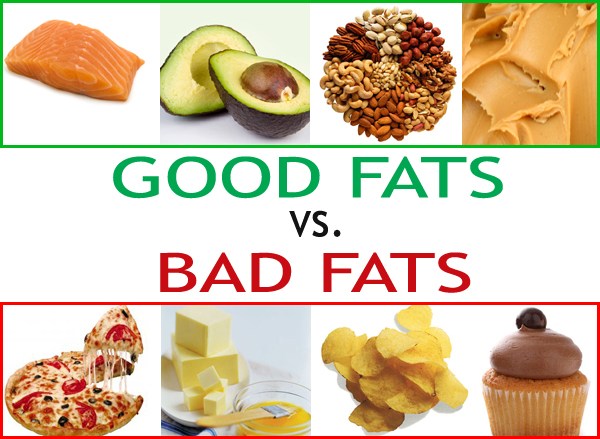

No comments:
Post a Comment